Patterns in Paintings
After reviewing the works of Morris Hirshfield I returned to some earlier thoughts I had on Patterns which remained unpublished on the Blog though we have looked at patterns in nature and patterns in buildings in earlier blogs.
This post is especially directed at those of you who are learning to paint though hopefully everyone will gain something from the content.
One artist that comes to mind when we talk about exploiting the patterns that exist in animals and vegetation is Swiss/Italian naive artist Antonio Ligabue (1899-1965).
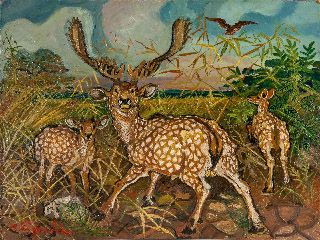
So today's post is about Patterns in Paintings. The spots in the deer painted by Ligabue are obvious but notice this is repeated in the stones in larger shapes under the animal hoofs. And the clouds are also this same basic shape but larger still. These round shapes establish the harmony or the rhythm of the image. The contrasting crisscross lines of the foliage add the dynamic element and also help create movement to support the startled posture of the deer.
Study the patterns you can see in the Ligabue painting below of the wild boar being chased by the hunters and their dogs. Notice also the repetition of shapes.
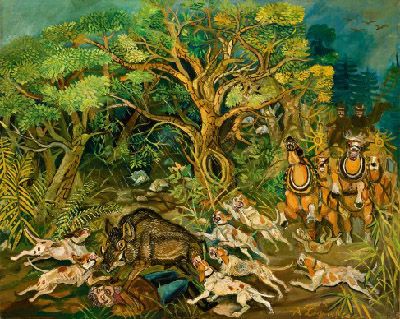
Antonio Ligabue uses shape and patterns so effectively to achieve the drama and tension that is in most of his paintings. Note the repetition of the patterns on the snake. The paws of the tiger are so dominant emphasising the position of the inevitable surrender by the tiger.
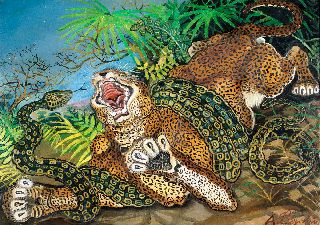
You can read another post on Antonio Ligabue here.
And now we turn to look at a few paintings I have done over the past. In the first one Windows on a Time: Two the patterns in the bricks harmonise with the pattern of the floor tiles. Note also the repetition of the group of three people.
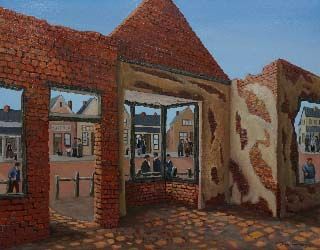
In Tuscan Steps again I have created a continuous pattern in this case paving stones on the steps leading up to the pattern of bricks in the buildings. Each group of plants and flowers also form patterns and shapes against the texture of the stones.
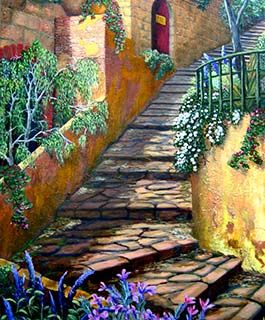
I have taken a similar approach in Italian Village as shown below.
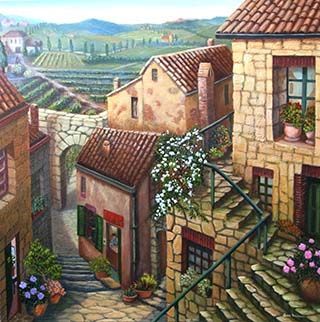
Emmy Lou Packard also known as Betty Lou Packard was a Californian post-war artist known for painting, printmaking and murals. One of my favourite works by her is this one. At first glance you see the patterns made by the boxes of fruit and vegetables. Then look a little more carefully and you will discern the figure of the man. I love it.
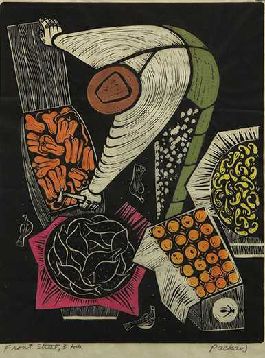
Packard's father founded an agricultural cooperative community in the Imperial Valley, California and was an internationally known agronomist. Look at this wonderful landscape Emmy Lou has created and note the patterns delineating each feature.
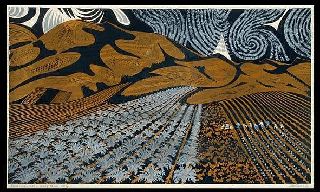
The pattern of shapes and colours in the cotton pickers (below) make for an interesting composition.
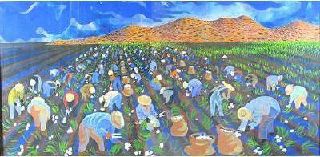
Note the repetition of the birds against the swirling sky and the somewhat chaotic composition of the people with the repetition of the red tones giving the image so much vibrancy to match the movement in the figures.
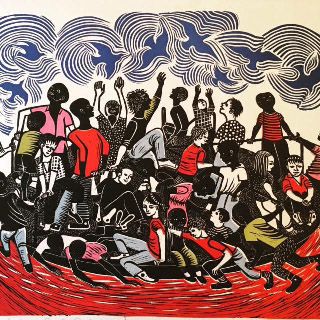
In 1936 Packard graduated from the University of California, Berkeley with her bachelor's degree and later studied sculpture, mural and fresco painting at the San Francisco Art Institute. In 1939 Emmy Lou Packard went to live with Diego Rivera and Frida Kahlo following the death of her husband Burton Cairns in a car accident. She worked as their studio assistant. (Wikipedia)
Rivera painted her into his Pan-American Unity Mural alongside Frank Lloyd Wright as you can asee below.
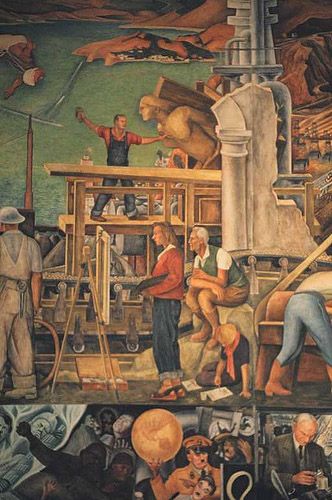
As I'm sure you are aware, I try to link the information in one post to the next. I have also commented on how often I find an unusual fact about an artist or a painting which links to someone else. I love to discover these surprising gems. When I was researching Grandma Moses I discovered two other artists who were part of the Unknown exhibition conducted by the Museum of Modern Art, New York. I have introduced you to one- Morris Hirshfield. The other Unknown was Byron Randall whom I was going to do next after Hirshfield but got caught up in wanting to say something about patterns in paintings. I had saved the works of Emmy Lou Parkard for this post as I knew she used patterns extensively in some of her paintings. Guess who she married in 1959? Yes- Byron Randall was Emmy Lou's second husband. What a great segue to him. However I was also saving Emmy Lou for a different reason. Her personal family friend and mentor was the famous Mexican artist Frida Kahlo. Now I don't know who to look at next!
I'm going to have a day off to think about all of this and to watch TV as I believe there is a significant wedding happening this week. I think I might have to draw the happy couple!
